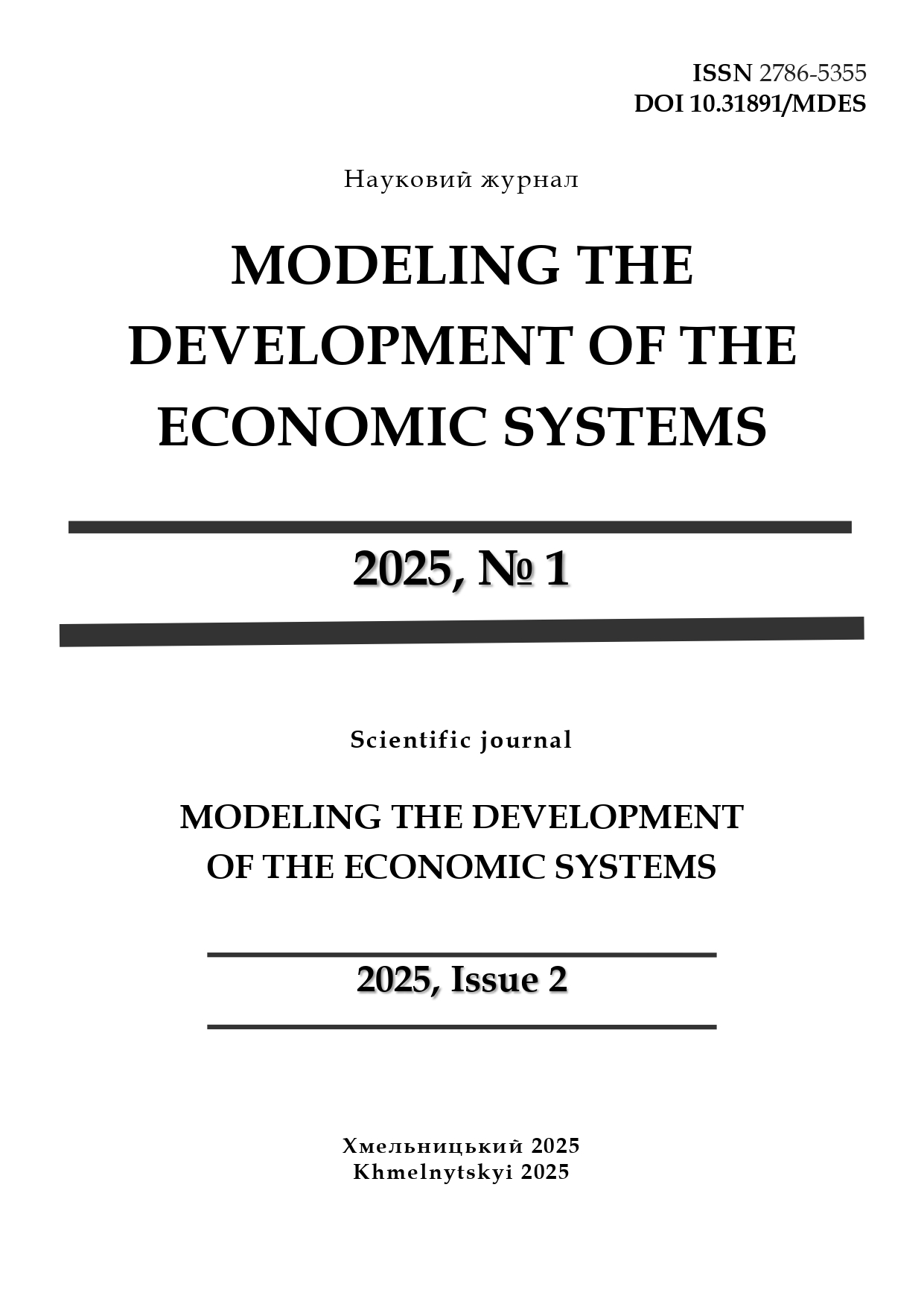ОБҐРУНТУВАННЯ СИСТЕМНОЇ МОДЕЛІ ВЗАЄМОЗВ’ЯЗКІВ МІЖ СЕКТОРАМИ
DOI:
https://doi.org/10.31891/mdes/2025-16-25Ключові слова:
системна модель економічної структури, міжсекторальні зв’язки, структурна трансформація, структурні зміни в економіці, інституційні детермінанти розвиткуАнотація
Статтю присвячено аспектам формування системної моделі взаємозв’язків між секторами економіки на основі міжсекторних потоків ресурсів. Метою дослідження є обґрунтування та розробка системної моделі взаємозв’язків між секторами економіки на основі міжсекторних потоків ресурсів, яка б забезпечувала цілісне уявлення про структурну динаміку економіки, сприяла виявленню ключових точок впливу для формування ефективної економічної політики та дозволяла адаптувати управлінські рішення до сучасних трансформаційних процесів.
У статті розглянуто еволюцію підходів до аналізу економічної структури та обґрунтування системної моделі взаємозв’язків між секторами економіки в контексті сучасних теоретичних парадигм. В дослідженні представлено порівняльний аналіз класичної, неокласичної, структуралістської, нової структурної та гетеродоксальної економічних шкіл, що дозволило ідентифікувати ґрунтовні положення щодо ролі структури в економічному розвитку. В дослідженні обґрунтовано необхідність переходу до комплексного системного бачення, в якому економічна структура розглядається як динамічна мережа взаємопов’язаних секторів, що формуються під впливом технологічних, інституційних, соціальних та глобалізаційних факторів. Представлено системну модель міжсекторальних зв’язків, що ґрунтується на потоках ресурсів між первинним, вторинним, третинним, четвертинним і п’ятирівневим секторами економіки. Виявлено, що структурна трансформація економіки супроводжується зміною ролі та значущості окремих секторів, зокрема зростанням частки сфери послуг і знань у постіндустріальних суспільствах. Дослідження ролі інституцій, технологій, факторів виробництва та глобальних впливів дозволило виявити ключові рушії структурних змін та їх вплив на соціально-економічну динаміку. Зроблено висновок, що ефективне функціонування економічної системи потребує гнучкого управління міжсекторальними зв’язками з урахуванням національних порівняльних переваг, інституційної спроможності та динаміки світової економіки. Представлена модель може бути використана для стратегічного планування, формування промислової політики та прогнозування довгострокових структурних змін у національній економіці.
##submission.downloads##
Опубліковано
Як цитувати
Номер
Розділ
Ліцензія
Авторське право (c) 2025 Вячеслав ІВАНЧЕНКОВА

Ця робота ліцензується відповідно до Creative Commons Attribution 4.0 International License.




